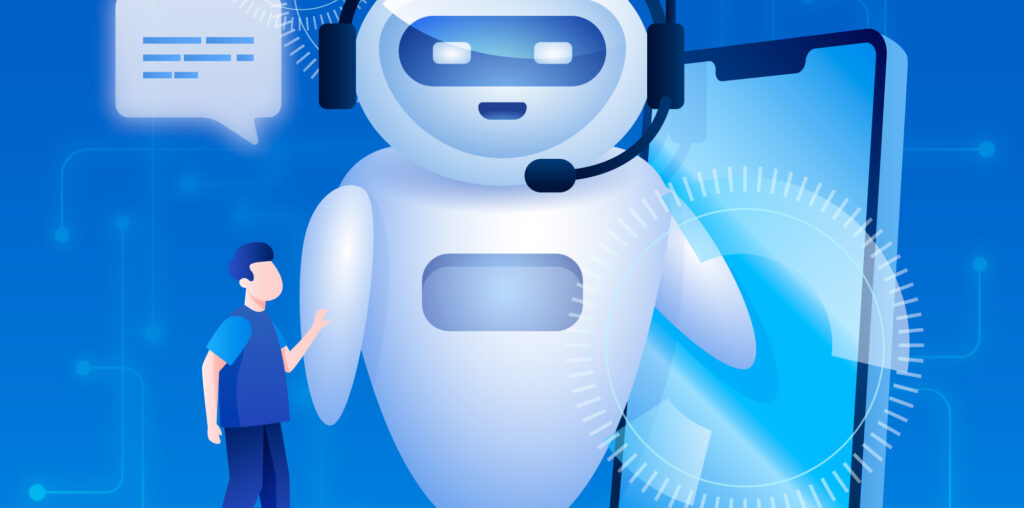As customer expectations continue to rise, businesses face mounting pressure to deliver faster, more personalized, and more efficient support. At the heart of this transformation is the rise of Generative AI in customer service. From AI-powered chatbots to fully integrated AI Call Center solutions, we’re witnessing a major shift in how companies interact with their customers — one that’s redefining the rules of engagement.
What Is Generative AI and Why It Matters
Generative AI refers to artificial intelligence systems capable of producing content — text, voice, images, and more — with human-like fluency. In customer service, this means the ability to generate dynamic responses to customer queries, synthesize information across platforms, and create a conversational flow that feels natural and personalized.
Unlike traditional scripted chatbots, generative AI can understand context, intent, and sentiment, enabling it to respond in real time with relevant solutions. Whether it’s assisting customers through a support portal or managing complex inquiries over the phone, generative AI is quickly becoming the new backbone of customer experience strategies.
1. 24/7 Availability with Human-Like Interaction
We live in an always-on world, and today’s customers expect support to match that pace. One of the greatest advantages of generative AI is its ability to deliver round-the-clock service without the limitations of traditional human staffing. AI doesn’t need breaks, holidays, or sleep — it’s always ready to help.
Even more importantly, the interaction doesn’t feel robotic. Generative AI models like ChatGPT have become sophisticated enough to mimic natural conversation, making customers feel heard, understood, and respected — all without waiting on hold for a human agent.
2. Scalable Support for Every Customer
Scaling a customer service team is often expensive and time-consuming. Hiring, training, and managing hundreds of agents just to meet peak demand can be inefficient. Generative AI offers a scalable solution by handling thousands of interactions simultaneously, without sacrificing quality.
Whether it’s a product inquiry, a billing issue, or technical support, AI can be trained on a brand’s specific tone, policies, and product knowledge to deliver consistent responses across all channels — web, mobile, voice, and email. This scalability makes it easier for growing companies to maintain high service standards without draining resources.
3. Faster Resolution, Higher Satisfaction
Speed is a crucial element in customer satisfaction. Generative AI significantly reduces resolution time by pulling relevant information from knowledge bases, past tickets, and FAQs in seconds. There’s no need for a customer to repeat themselves multiple times or get transferred from one department to another.
With AI taking care of initial triage and frequently asked questions, human agents are free to focus on more complex, emotionally sensitive, or high-stakes interactions. The result? A hybrid support model that improves both customer and agent satisfaction.
4. Deep Personalization at Scale
We’ve all experienced the frustration of getting generic, irrelevant support. Generative AI changes that by offering hyper-personalized service. It can analyze customer data — from purchase history to browsing behavior — and tailor responses based on the individual’s needs and preferences.
For example, if a customer contacts support about a delayed order, AI can instantly access their recent purchases, detect the issue, and offer solutions such as expedited shipping or compensation — all without needing the customer to explain the situation in detail. That kind of proactive service builds loyalty and trust.
5. Continuous Learning and Improvement
Another powerful benefit of generative AI is its ability to learn and adapt over time. As it interacts with more customers, it gathers data, identifies patterns, and fine-tunes its responses. Businesses can use this feedback loop to improve customer service strategies, update FAQs, and anticipate emerging concerns.
Moreover, AI analytics offer deep insights into customer sentiment, trending issues, and service gaps, allowing leadership teams to make informed decisions and stay ahead of customer needs.
6. Cost Efficiency Without Compromise
By automating routine interactions and streamlining workflows, generative AI helps businesses reduce operational costs while improving service quality. AI-powered systems can significantly lower expenses associated with staffing, training, and customer churn.
We’ve seen companies report a 30-50% reduction in customer service costs after implementing generative AI, without compromising customer satisfaction — a win-win for both sides.
Real-World Impact: From Tech Startups to Global Enterprises
We’ve worked with a wide range of businesses — from lean startups to global enterprises — and the feedback is clear: integrating generative AI into customer service isn’t just a nice to have; it’s becoming a necessity.
For startups, it levels the playing field by offering enterprise-level service without the overhead. For larger organizations, it helps streamline operations, improve consistency, and deliver a unified brand experience across markets.
What We’ve Learned from the Best
It’s no coincidence that some of the Best Customer Service Brands — think Amazon, Apple, and Zappos — are also pioneers in AI adoption. These companies understand that great service isn’t just about answering questions — it’s about creating seamless, proactive, and memorable experiences.
From the user’s point of view, the shift is already happening. We no longer care how support is delivered — whether it’s a person or an AI — as long as the experience is smooth, fast, and effective. In fact, when AI is done right, most of us can’t even tell the difference.
Conclusion
Generative AI is transforming customer service into something faster, smarter, and more human. As businesses continue to embrace this technology, the ones that thrive will be those who balance innovation with empathy — delivering not just support, but meaningful experiences at scale.
Now is the time to invest in AI solutions that meet customers where they are — and exceed their expectations every step of the way.




